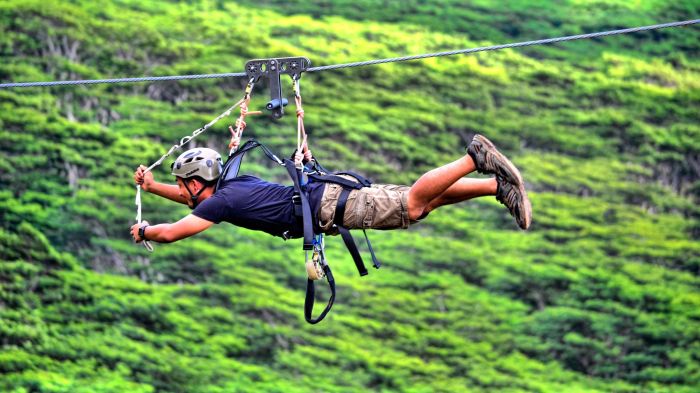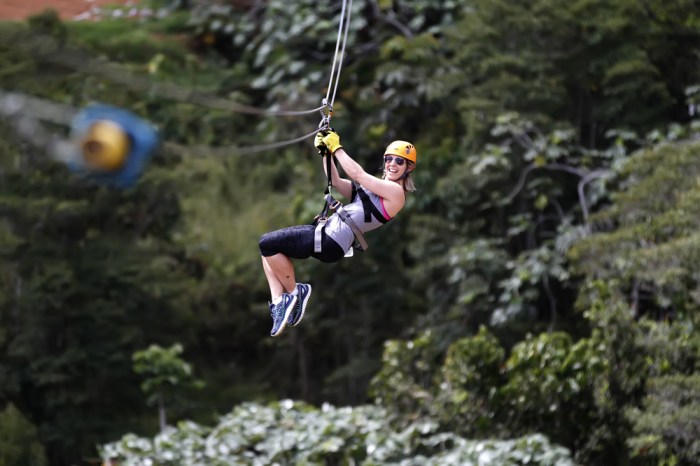Polar Bear Tours A Guide to Wildlife Encounters
Polar bear tours offer a unique opportunity to witness these magnificent creatures in their natural habitat. From exploring diverse destinations to experiencing various tour types, this guide delves into the world of responsible polar bear tourism. Understanding the destinations, the types of experiences available, and the sustainable practices employed by tour operators is key to ensuring a memorable and responsible adventure.
This comprehensive overview explores the most popular destinations for polar bear viewing, examining the unique characteristics of each location and comparing the accessibility and logistics of tours. Different tour experiences, ranging from land-based to boat-based, are detailed, emphasizing safety measures and responsible wildlife interactions. The environmental impact of polar bear tours and the sustainable practices of leading tour operators are also highlighted, offering valuable insights into responsible tourism.
Polar Bear Tour Destinations

Source: polarbears.com
Polar bear tours offer a unique opportunity to witness these magnificent creatures in their natural habitat. Careful planning and respect for the environment are crucial for ensuring a safe and memorable experience for all participants. A well-structured tour often includes expert guides who provide valuable insights into polar bear behavior and conservation efforts.
Popular Destinations for Polar Bear Tours
This section details the most popular destinations for polar bear viewing tours, ranked by their prevalence. The appeal of each location is influenced by factors like bear density, accessibility, and the quality of viewing opportunities.
- Canada (specifically Hudson Bay and Churchill): Known for its high polar bear population density, Churchill is a premier destination. The unique geography of the Hudson Bay area, including the ice floes, allows for excellent viewing opportunities as the bears congregate around the bay. Tours in this region often feature extended viewing periods and chances to see bears in various activities, like hunting or foraging. Accessibility is generally good, with a range of accommodation and tour options available.
- Svalbard, Norway: This remote archipelago in the Arctic offers a distinct polar bear experience. The unique landscape, including fjords and glaciers, provides a breathtaking backdrop for observing bears. Bear encounters in Svalbard are often less frequent compared to Hudson Bay, but the remoteness and beauty of the area compensate for this. Logistics for tours are generally more complex due to the remote location and seasonal accessibility constraints. Tours are generally more expensive but offer a truly unique Arctic adventure.
- Northern Russia (specifically the Yamal Peninsula): A less commonly known destination, the Yamal Peninsula offers a unique experience due to its diverse landscape and the chance to see polar bears in their natural habitat. The rugged terrain, however, impacts the accessibility and logistics of tours. Tours are often more challenging and expensive than in more established locations. There’s a growing interest in this region as its accessibility improves.
Accessibility and Logistics of Polar Bear Tours
The accessibility and logistical challenges vary significantly across different locations. Travel time, accommodation, and tour operator expertise are crucial factors.
- Hudson Bay and Churchill: Relatively easy access via air and road. Tours are well-established, with numerous operators offering various packages. Accommodation options range from basic lodges to more luxurious hotels.
- Svalbard: Access requires air travel, primarily via flights to Longyearbyen. Logistics are more complex, involving specialized equipment and skilled guides. Tours are usually smaller and more focused on high-quality viewing experiences.
- Northern Russia: Access is more challenging, requiring longer travel times and potentially more complex logistics. Tours may be more specialized, with fewer operators. The remote location often requires specialized equipment and experience.
Cost and Duration of Polar Bear Tours
The cost and duration of tours vary depending on factors like location, accommodations, and the level of service provided.
| Destination | Average Tour Duration | Typical Viewing Opportunities | Estimated Cost (USD) |
|---|---|---|---|
| Hudson Bay (Churchill) | 5-7 days | High chance of seeing bears in various activities | $3,000-$5,000 |
| Svalbard | 7-10 days | Lower bear density, but unique scenery and high-quality viewing experiences | $5,000-$8,000 |
| Northern Russia (Yamal) | 7-10 days | Challenging terrain, but potentially unique viewing opportunities | $4,000-$7,000 |
Polar Bear Tour Experiences: Polar Bear Tours
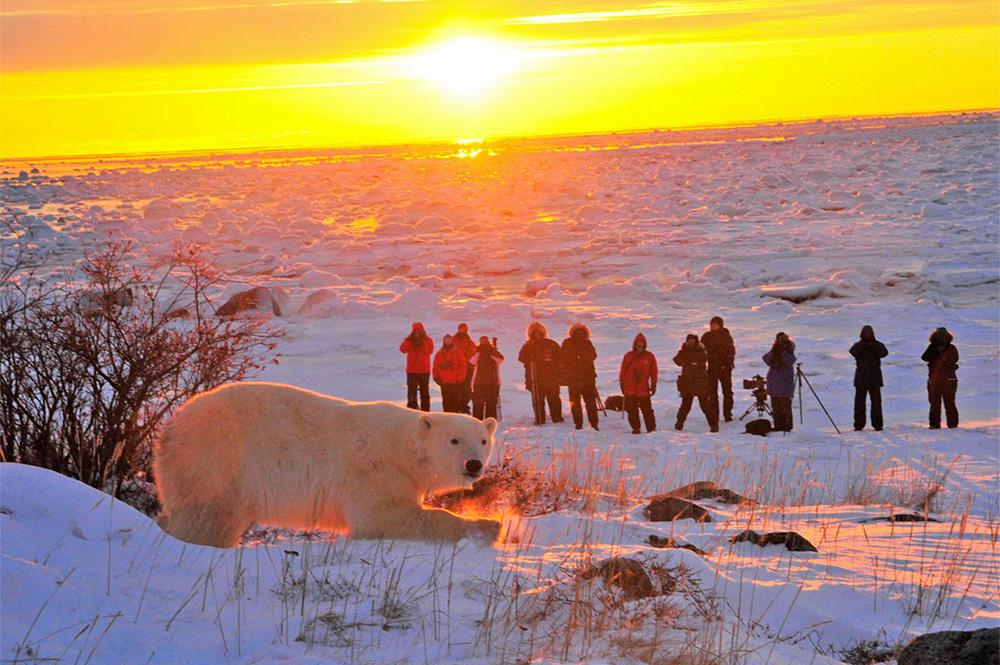
Polar bear tours offer unique opportunities to witness these magnificent creatures in their natural habitat. These expeditions require careful planning and adherence to strict safety protocols, ensuring both an unforgettable experience and the preservation of polar bear populations. The variety of tour types allows participants to tailor their experience based on their interests and comfort levels.
Types of Polar Bear Tours
Polar bear tours are categorized based on the method of travel and interaction with the bears. This allows participants to choose an experience that aligns with their preferences and the specific area they wish to visit.
- Land-based tours are conducted on foot or by vehicle, providing opportunities to observe polar bears from a distance while immersed in the Arctic landscape. These tours often include guided walks, allowing for close-range observation while maintaining a safe distance. An example might be a guided hike on the Alaskan tundra, allowing participants to witness the majestic bears from a safe, elevated position.
- Boat-based tours, particularly popular in areas with ice floes and pack ice, provide a unique perspective of polar bears from the water. These tours frequently involve a combination of boat travel and periods of observation. The experience allows for exceptional wildlife viewing opportunities and may involve zodiac boat rides for close-up views, as long as safety protocols are followed strictly. This is a popular method in the Canadian Arctic.
- Air tours offer a breathtaking aerial perspective of polar bears in their environment. These tours typically involve flights over remote areas where polar bears are found. The elevated vantage point provides a wider view of the terrain and allows for spotting the bears from a distance. This approach offers a unique opportunity for wildlife viewing, though it might not provide as close interaction as land or boat tours. This is often used in regions with dense ice coverage or remote landscapes.
Typical Activities
Polar bear tour activities are carefully structured to prioritize safety and responsible wildlife viewing. These activities usually involve knowledgeable guides who provide insights into polar bear behavior and ecology.
- Land-based tours often include guided walks or vehicle-based observation points, allowing participants to see polar bears in their natural habitat. These tours may involve lectures and presentations about polar bear biology, conservation efforts, and the importance of maintaining a respectful distance from the animals.
- Boat-based tours typically involve zodiac boat rides, allowing for close-up observation of the bears. The guides will ensure that the boats maintain a safe distance and provide detailed information about the bears’ behavior. The tour often includes a presentation on the environment, local ecosystem, and polar bear adaptations.
- Air tours usually focus on aerial observation of polar bears in their natural habitat. These tours might include pre-flight briefings about the area, the species, and the importance of respecting the environment.
Safety Measures and Protocols
Safety and responsible wildlife viewing are paramount in polar bear tours. Strict protocols are in place to ensure a safe and enjoyable experience for participants while minimizing any potential risks to the bears.
- Experienced guides are essential for leading polar bear tours. These guides are trained in identifying safe viewing distances, interpreting bear behavior, and understanding how to react to potential threats. Their knowledge of the area and the animals is critical for ensuring participant safety.
- Strict adherence to safety guidelines is mandatory for all participants. These guidelines usually cover maintaining a safe distance from polar bears, avoiding sudden movements, and never feeding the animals. Clear communication and understanding of these guidelines are essential for a successful and safe experience.
- Appropriate equipment, including binoculars and spotting scopes, is crucial for viewing the bears. The use of these tools ensures that participants can observe the animals without disturbing their natural behavior.
Comparison of Tour Types
| Tour Type | View Angle | Wildlife Interaction | Travel Method |
|---|---|---|---|
| Land-based | Ground-level, varied depending on terrain | Moderate, guided observation | Hiking, vehicle travel |
| Boat-based | Water-level, close-up views | Moderate to close-up, depending on ice conditions | Zodiac boats, large vessels |
| Air-based | Aerial, wide-ranging views | Distance observation | Aircraft |
Polar Bear Tour Sustainability
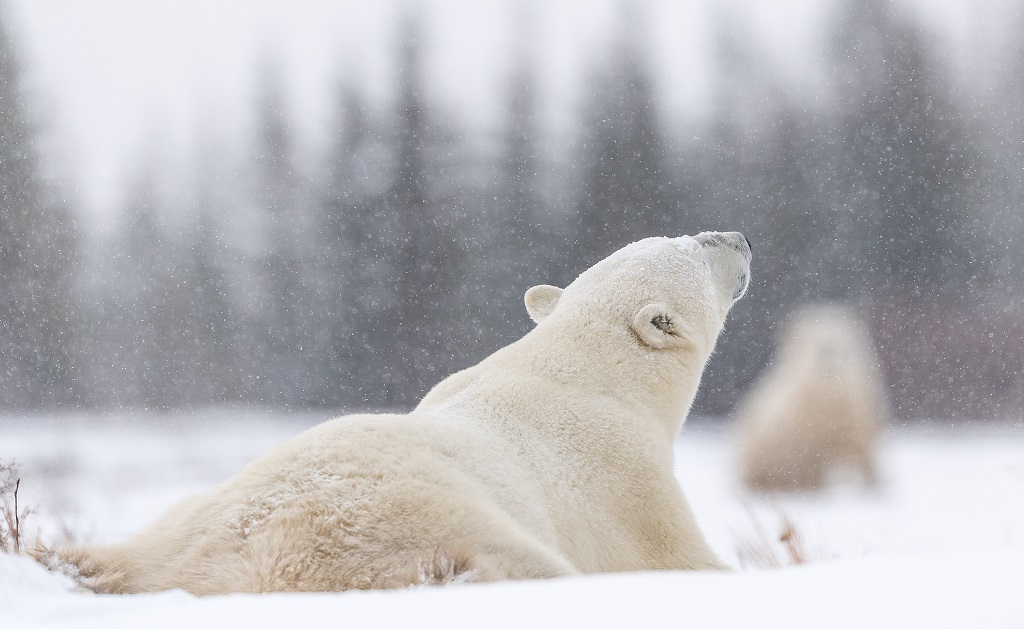
Polar bear tours offer a unique opportunity to witness these magnificent creatures in their natural habitat. However, the industry must carefully consider its environmental impact to ensure the long-term well-being of polar bears and their Arctic ecosystems. Responsible tour operators are increasingly implementing sustainable practices to minimize their footprint.
The growing popularity of polar bear tours presents a complex challenge. While these experiences provide valuable educational opportunities and economic benefits, they also have the potential to negatively impact polar bear populations and their fragile Arctic environment. Sustainable tourism practices are crucial for balancing these interests and preserving the integrity of these ecosystems for future generations.
Environmental Impact of Polar Bear Tours
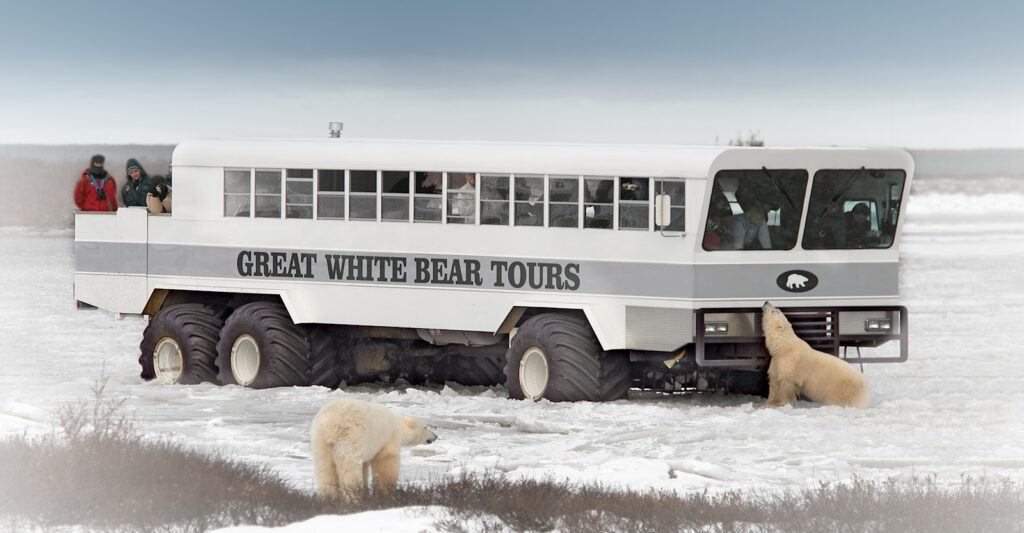
Polar bear tours, if not managed responsibly, can have several negative consequences on the environment. Disturbance from human presence can disrupt the bears’ natural behaviors, including feeding patterns and breeding cycles. Increased human activity in sensitive habitats can also fragment their territories and potentially lead to stress. The noise and physical presence of tour vessels can further disrupt their natural routines. Waste disposal and potential oil spills from tour operations can also contribute to pollution.
Sustainable Practices of Responsible Tour Operators
Responsible tour operators prioritize minimizing their environmental impact through various strategies. These include strict adherence to guidelines set by conservation organizations, limitations on the number of tours and the number of people per tour, and the use of low-impact vessels to reduce noise and disturbance. These companies also actively participate in educating tourists about responsible wildlife viewing. Strict adherence to regulations concerning waste disposal is also a key aspect of their operations.
Examples of Environmentally Friendly Tour Companies
Several tour companies have demonstrated exemplary practices in minimizing their environmental footprint. Arctic Safaris, known for its commitment to low-impact operations, employs smaller, quieter vessels and carefully monitors the distance kept from polar bears during tours. They also actively support conservation efforts through donations and partnerships with local organizations. Another company, Aurora Expeditions, focuses on responsible wildlife viewing by strictly limiting the number of tourists on each tour and implementing stringent waste management protocols.
Adapting the Tour Industry to Minimize Impact
The polar bear tour industry can further minimize its impact by employing innovative solutions. These include using advanced tracking technologies to monitor bear movements and ensure minimum disturbance. Investing in more advanced, quieter, and eco-friendly vessels can reduce the noise pollution impacting bears. Enhanced training for tour guides on responsible wildlife viewing protocols can improve the experience while minimizing disruptions. Partnerships with conservation organizations can help fund vital research and protection programs for polar bears and their habitats.
Comparative Analysis of Environmental Policies
| Tour Company | Waste Management Policy | Vessel Type | Tourist Capacity | Conservation Initiatives |
|---|---|---|---|---|
| Arctic Safaris | Zero-waste policy, recycling | Low-emission vessels | Limited tourist capacity | Donations to conservation groups |
| Aurora Expeditions | Strict waste disposal protocols | Low-impact vessels | Limited tourist capacity | Partnerships with local conservation groups |
| North Star Adventures | Waste collected and disposed of responsibly | Moderate-sized vessels | Moderate tourist capacity | Limited support for local conservation projects |
Note: This table provides a simplified comparison. Detailed policies may vary and are subject to change. It’s crucial to independently verify policies with each company before booking.
Ending Remarks
In conclusion, polar bear tours provide an unforgettable opportunity to connect with nature and observe these incredible animals. However, responsible travel is paramount. By carefully considering the destinations, tour types, and the environmental impact of the experience, travelers can ensure that their adventures contribute to the preservation of polar bear populations and their habitats. Choosing reputable operators who prioritize sustainability ensures a memorable and ethical experience.



